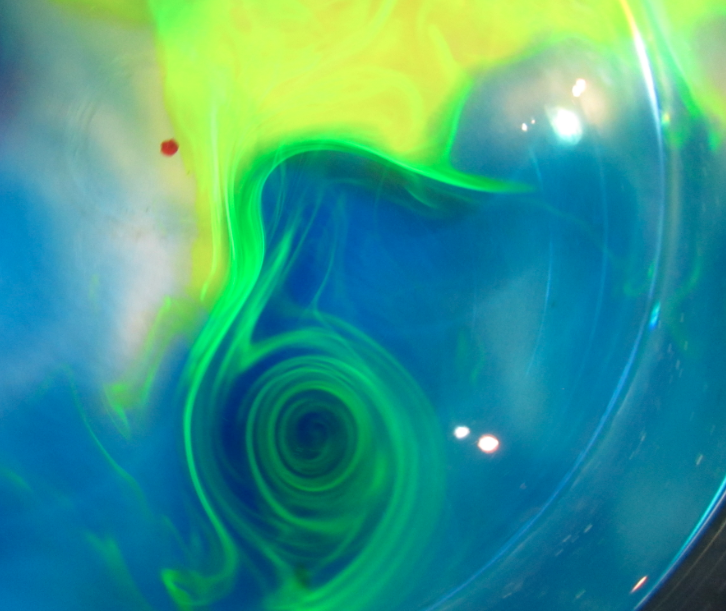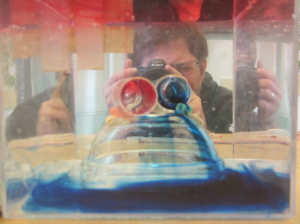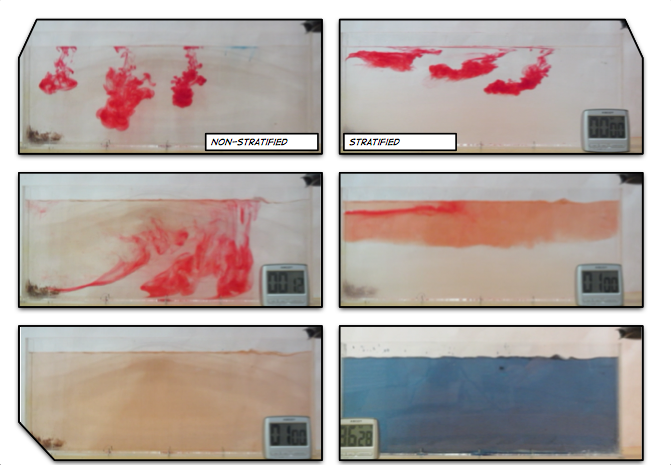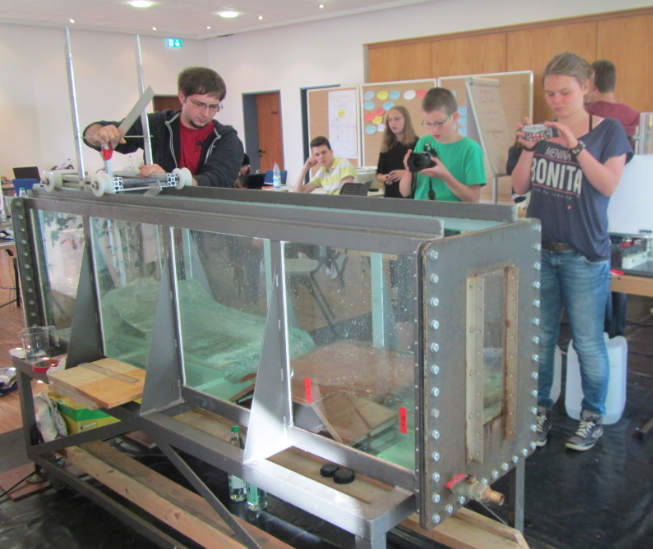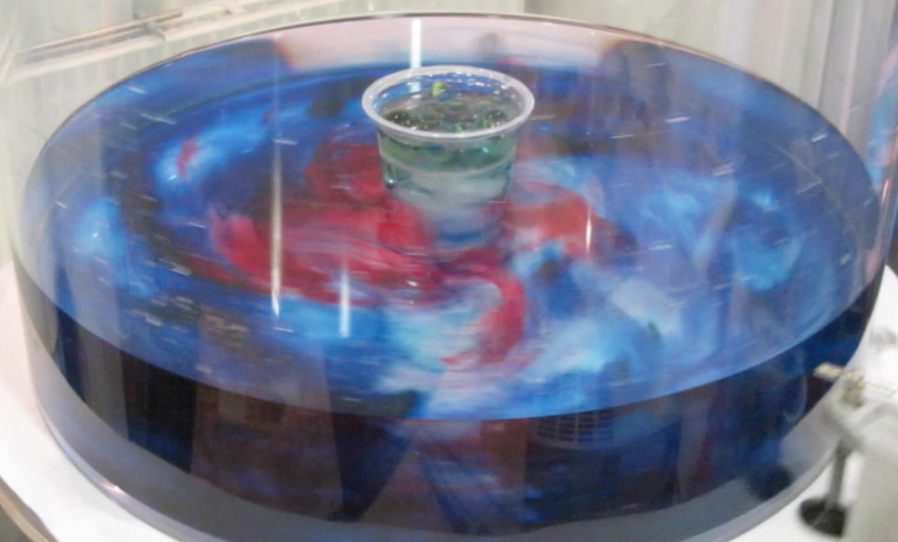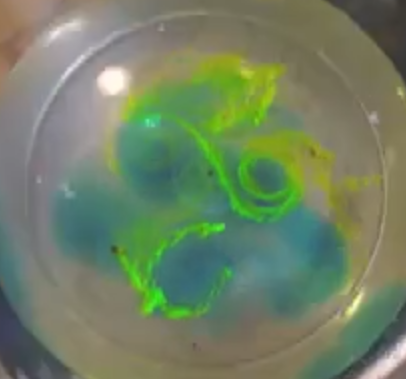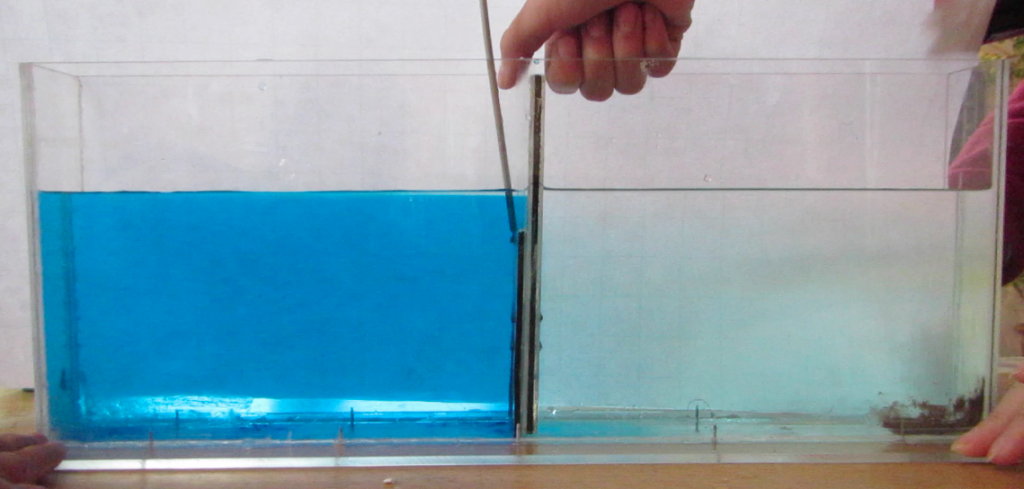Trying to tweak conditions to force a set number of vortices.
We’ve done the hetonic explosion again. This time the group was super careful to calculate the Rossby radius correctly, and then to set up the experiment accordingly. We aimed for a single column like in our tilting of a frontal surface under rotation experiment.
We did manage to create one main vortex, but we saw at least two additional smaller vortices. And since we know how vortices are created, it is pretty likely that there were four in total.
But never mind, it is still a very nice experiment that we are happy to do over and over again!
Movies will come up once I have time to actually write the posts – we do have numerical simulations that we want to compare our experiments with. Stay tuned!
